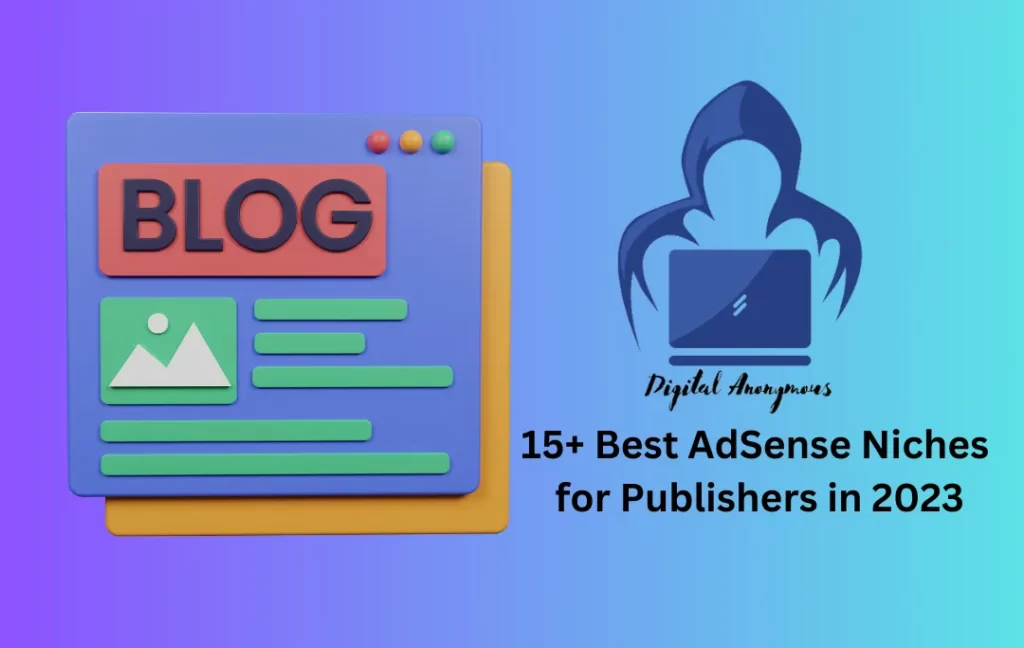Prompt engineering plays a vital role in content creation and search engine optimization (SEO). Crafting well-optimized prompts can significantly enhance the effectiveness of your content and improve your website’s visibility in search engine results. In this article, we will explore the concept of prompt engineering, its importance, and techniques to create engaging and SEO-friendly prompts that captivate readers and search engines alike.
What is Prompt Engineering?
Prompt engineering is a technique used in artificial intelligence, particularly natural language processing, to improve the performance of large language models (LLMs) on a variety of tasks. Prompts are short pieces of text that are used to guide the LLM’s output. By carefully crafting the prompt, the prompt engineer can help the LLM to focus on the relevant aspects of the task and to produce more accurate and relevant results.
For example, a prompt engineer might use the following prompt to generate a poem about a specific topic:
Write a poem about the beauty of nature.
This prompt provides the LLM with a clear goal and helps it to focus on the relevant aspects of the task. The LLM will then generate a poem that is likely to be both beautiful and relevant to the topic of nature.
Prompt engineering is a powerful technique that can be used to improve the performance of LLMs on a wide variety of tasks. As LLMs continue to develop, prompt engineering is likely to become even more important as a way to unlock their full potential.
Here are some examples of how prompt engineering can be used:
- To improve the accuracy of LLMs on question answering tasks.
- To generate more creative and interesting text formats, such as poems, code, scripts, musical pieces, email, letters, etc.
- To solve complex problems that would be difficult or impossible for humans to solve on their own.
Prompt engineering is a rapidly evolving field, and new techniques are being developed all the time. As the field continues to grow, it is likely that prompt engineering will become an essential tool for anyone who wants to use LLMs to solve problems or generate creative content.
Importance of Prompt Engineering

In the digital landscape, where attention spans are short and competition is fierce, prompt engineering holds immense significance. An effectively engineered prompt can make a substantial difference in attracting users to your content, boosting click-through rates (CTRs), and ultimately driving conversions. By optimizing prompts for both users and search engines, you can enhance the visibility, relevance, and impact of your content.
Understanding Prompt Engineering
Definition and Purpose
Prompt engineering involves developing prompts that capture the essence of your content and entice users to engage further. These prompts act as gateways to your website, setting expectations and generating interest. They serve as the first impression and can determine whether users click through to your site or move on to the next search result.
Components of a Good Prompt
To create effective prompts, several components should be considered:
- Contextual Understanding: Prompts should align with the content they represent, providing a clear and accurate preview of what users can expect.
- Specificity and Clarity: Clear and concise prompts that communicate the unique value proposition of the content tend to attract more users.
- Length and Format: Prompts should be appropriately sized for different platforms and devices, ensuring they are fully visible and impactful.
- Language Style: The tone and style of prompts should match the overall brand voice and resonate with the target audience.
Techniques for Effective Prompt Engineering

Identifying the Goal
Before creating prompts, it is crucial to define the desired outcome. Are you aiming to inform, persuade, entertain, or sell? Identifying the goal will help shape the content and guide prompt creation.
Targeting the Audience
Understanding your target audience is essential for prompt engineering. Research their preferences, pain points, and interests to tailor prompts that resonate with them. Speak their language, address their needs, and position your content as a solution.
Conducting Keyword Research
Keyword research plays a crucial role in prompt engineering. Identify relevant keywords and phrases that align with your content and audience’s search intent. Incorporate these keywords strategically into your prompts to optimize them for search engines.
Utilizing Structured Data and Schema Markup
Structured data and schema markup provide additional context to search engines about your content. By incorporating structured data into your prompts, you can enhance the visibility and appeal of your content in search engine result pages (SERPs).
Crafting Engaging Prompts
Using Power Words and Phrases
Power words and phrases evoke emotions and create a sense of urgency, making prompts more compelling. Words like “exclusive,” “limited time,” and “discover” can pique readers’ curiosity and drive them to take action.
Incorporating Rhetorical Questions
Rhetorical questions in prompts engage readers by stimulating their thoughts and encouraging them to seek answers. Questions like “Want to boost your website’s traffic?” create a sense of intrigue and motivate users to explore further.
Employing Analogies and Metaphors
Analogies and metaphors can make prompts more relatable and memorable. They help convey complex concepts in a simple and engaging manner. For example, “Unlock the secret to SEO success with our content compass.”
Optimizing Prompts for SEO

Keyword Placement and Density
Strategic placement of keywords in prompts is crucial for SEO. Include relevant keywords at the beginning or near the beginning of the prompt to capture users’ attention and improve search engine visibility. However, avoid keyword stuffing, as it can negatively impact user experience.
Including Long-Tail Keywords
Long-tail keywords are more specific and targeted phrases that can attract users with higher purchase intent. Incorporating long-tail keywords into prompts can help attract qualified traffic and improve the chances of conversions.
Formatting for Featured Snippets
Featured snippets are concise summaries displayed at the top of search results. Structuring your prompts to answer common questions or provide quick insights can increase the likelihood of your content being featured as a snippet, driving more organic traffic to your site.
Testing and Iterating Prompts
A/B Testing and Analytics
Conducting A/B tests with different prompts can provide valuable insights into user preferences and behaviors. Analyze the data to identify high-performing prompts and make data-driven decisions for prompt optimization.
Gathering User Feedback
Engage with your audience to gather feedback on the effectiveness of your prompts. Monitor user comments, conduct surveys, and actively seek suggestions for improvement. User feedback can uncover valuable insights and guide prompt iterations.
Making Adjustments for Improvement
Prompt engineering is an iterative process. Continuously monitor and analyze the performance of your prompts, and make adjustments based on data and user feedback. Small tweaks and optimizations can have a significant impact on prompt effectiveness.
The Impact of Well-Engineered Prompts
Higher Click-through Rates (CTRs)
Well-optimized prompts can significantly improve CTRs by capturing users’ attention and enticing them to click through to your content. Higher CTRs indicate increased visibility and can lead to improved organic traffic.
Improved Search Engine Rankings
Search engines consider user engagement metrics, such as CTRs, when determining search rankings. By crafting engaging prompts, you can increase user interaction, dwell time, and ultimately improve your website’s search engine rankings.
Enhanced User Experience
Prompt engineering goes beyond search engine optimization. Well-crafted prompts provide a positive user experience by setting clear expectations and helping users find relevant content quickly. A seamless user experience can lead to increased engagement, repeat visits, and conversions.
Prompt engineering jobs

Here are some examples of prompt engineering jobs:
- Prompt Engineer
- AI Prompt Engineer
- Natural Language Processing Engineer
- Text Generation Engineer
- Creative Content Engineer
These jobs are typically found in the technology industry, but they may also be found in other industries that are using LLMs to solve problems or generate creative content.
To be a successful prompt engineer, you will need to have a strong understanding of natural language processing, machine learning, and artificial intelligence. You will also need to be creative and have a good understanding of the different ways that LLMs can be used.
If you are interested in a career in prompt engineering, there are a few things you can do to prepare. First, you should take courses in natural language processing, machine learning, and artificial intelligence. You should also practice your creative writing skills and learn about the different ways that LLMs can be used.
Once you have the necessary skills and experience, you can start looking for prompt engineering jobs. There are a number of companies that are hiring prompt engineers, including Google, OpenAI, and DeepMind.
Here are some websites where you can find prompt engineering jobs:
- Indeed
- Glassdoor
- AngelList
- The Muse
You can also find prompt engineering jobs by attending conferences and meetups related to natural language processing, machine learning, and artificial intelligence.
If you are interested in a career in prompt engineering, I encourage you to learn more about the field and to start preparing your skills. This is a rapidly growing field with a lot of potential, and it is a great opportunity to use your skills to make a real impact on the world.
Prompt engineering course
Here are some of the best online courses for learning prompt engineering:
Prompt Engineering with ChatGPT is a course offered by Coursera.

In this course, you will learn how to use a large language model (LLM) to quickly build new and powerful applications. Using the OpenAI API, you will be able to quickly build capabilities that learn to innovate and create value in ways that were cost-prohibitive, highly technical, or simply impossible before now.
ChatGPT Prompt Engineering for Developers is a course offered by Deep Learning.AI.

In this course, you will learn how to use a large language model (LLM) to quickly build new and powerful applications. Using the OpenAI API, you will be able to quickly build capabilities that learn to innovate and create value in ways that were cost-prohibitive, highly technical, or simply impossible before now.
The Complete Prompt Engineering for AI Bootcamp is a course offered by Udemy.

In this course, you will learn everything you need to know about prompt engineering, including the basics of natural language processing, how to use large language models, and how to write effective prompts.
Prompt Engineering for Everyone with chatGPT and GPT-4 is a course offered by Udemy.

In this course, you will learn the basics of prompt engineering and how to use it to generate text, translate languages, write different kinds of creative content, and answer your questions in an informative way.
ChatGPT Secrets: Beginner to ChatGPT Ninja w/ 700+ Prompts is a course offered by Udemy.

In this course, you will learn how to use ChatGPT to generate text, translate languages, write different kinds of creative content, and answer your questions in an informative way. You will also learn how to use 700+ pre-made prompts to get started with ChatGPT.
These are just a few of the many online courses available for learning prompt engineering. With so many options available, you can find a course that fits your needs and budget.
In addition to online courses, there are also a number of books and articles available on prompt engineering. Here are a few of the most popular resources:
- The Art of Prompt Engineering by Dario Amodei and Ilya Sutskever
- Prompt Engineering for Natural Language Processing by Tom B. Brown and Benjamin Mann
- Prompt Engineering: A Hands-On Guide to Using Large Language Models by Chris Olah and Mike Nielsen
- The Illustrated Guide to Prompt Engineering by Alec Radford, Jeffrey Wu, Rewon Child, David Luan, Dario Amodei, Ilya Sutskever
- Prompt Engineering with ChatGPT: A Practical Guide by Bard
These resources provide a more in-depth look at the theory and practice of prompt engineering. If you are serious about learning prompt engineering, I recommend reading one or more of these books.
Once you have learned the basics of prompt engineering, you can start practicing by using ChatGPT or other large language models. There are a number of websites and forums where you can share your prompts and results. This is a great way to learn from others and to get feedback on your work.
Prompt engineering is a rapidly evolving field, and new techniques are being developed all the time. As the field continues to grow, it is likely that prompt engineering will become an essential tool for anyone who wants to use large language models to solve problems or generate creative content.
How long is the prompt engineering course?

The length of a prompt engineering course can vary depending on the course provider and the level of detail covered. However, most courses typically last between 6 and 12 weeks.
For example, the Prompt Engineering for ChatGPT course on Coursera is 6 weeks long and covers the basics of prompt engineering, including how to create effective prompts for ChatGPT. The AI Applications and Prompt Engineering course on edX is 1 week long and provides a more in-depth overview of prompt engineering, including how to use prompts to solve a variety of AI problems.
In addition to the length of the course, it is also important to consider the level of detail that is covered. Some courses may focus on the basics of prompt engineering, while others may provide more in-depth coverage of advanced topics. It is important to choose a course that meets your individual needs and learning style.
Here are some of the top prompt engineering courses available online:
- Prompt Engineering for ChatGPT on Coursera
- AI Applications and Prompt Engineering on edX
- The Complete Prompt Engineering for AI Bootcamp (2023) on Udemy
- Prompt Engineering with ChatGPT 4 & Midjourney 2000+ prompts on Udemy
- Create 10 Projects with ChatGPT4 & Midjourney V5 | Prompt Engineering, Generative AI, Chat GPT Productivity, AI Business on Udemy
These courses offer a variety of learning options, including video lectures, interactive exercises, and hands-on projects. With so many great options available, you are sure to find the perfect prompt engineering course to help you learn the skills you need to succeed in this exciting field.
What is the cost of prompt engineering?

The cost of prompt engineering can vary depending on a number of factors, including the experience of the engineer, the complexity of the project, and the resources required. However, in general, prompt engineering can be a relatively affordable service.
For example, a basic prompt engineering project that involves creating a few simple prompts for a chatbot might cost around $500. A more complex project that involves creating a large number of complex prompts for a large language model might cost around $5,000. And a project that involves using prompt engineering to solve a specific problem, such as generating creative content or writing code, might cost even more.
It is important to note that the cost of prompt engineering is not always directly related to the quality of the work. A good prompt engineer can produce high-quality results for a relatively low price. However, it is also important to choose an engineer who has experience with the specific type of project you need help with.
If you are considering hiring a prompt engineer, it is important to get quotes from several different engineers before making a decision. This will help you to ensure that you are getting the best possible value for your money.
Here are some of the factors that can affect the cost of prompt engineering:
- The experience of the engineer: More experienced engineers will typically charge more than less experienced engineers.
- The complexity of the project: More complex projects will typically require more time and effort, and will therefore cost more.
- The resources required: Some projects may require access to specialized resources, such as large language models or GPUs. These resources can add to the cost of the project.
If you are on a tight budget, there are a few things you can do to save money on prompt engineering:
- Choose a less experienced engineer: Less experienced engineers may charge less than more experienced engineers. However, it is important to make sure that the engineer you choose has the skills and experience necessary to complete your project.
- Choose a simpler project: Simpler projects will typically require less time and effort, and will therefore cost less.
- Do some of the work yourself: If you are comfortable with the technical aspects of prompt engineering, you may be able to save money by doing some of the work yourself. However, it is important to make sure that you have the skills and knowledge necessary to complete the project successfully.
Prompt engineering examples
Prompt engineering is the process of designing prompts that help large language models (LLMs) generate better text. LLMs are trained on massive datasets of text and code, but they can sometimes generate text that is nonsensical, repetitive, or off-topic. Prompt engineering can help to improve the quality of LLM output by providing the model with more specific instructions and guidance.
Here are some examples of prompt engineering:
- Instructive prompts provide the model with specific instructions on what to generate. For example, an instructive prompt for a poem might be: “Write a poem about the beauty of nature.”
- Context-providing prompts provide the model with information that can help it to generate more relevant and informative text. For example, a context-providing prompt for a news article might be: “Write an article about the recent earthquake in Japan.”
- Comparative prompts ask the model to compare or evaluate different options. For example, a comparative prompt might be: “Which is better, a cat or a dog?”
Prompt engineering is an ongoing research area, and there is no one-size-fits-all approach. The best prompts will vary depending on the specific task and the LLM that is being used. However, by understanding the principles of prompt engineering, you can create prompts that help LLMs to generate better text.
Here are some additional examples of prompt engineering:
- Few-shot prompting is a technique that allows LLMs to learn new tasks with very little training data. For example, an LLM might be able to learn to write a poem about the beauty of nature after being given just a few examples of poems.
- Multimodal prompting allows LLMs to generate text based on multiple sources of information, such as text, images, and code. For example, an LLM might be able to generate a description of a product after being given a picture of the product and a list of its features.
- Active learning is a technique that allows LLMs to learn from feedback from users. For example, an LLM might be able to improve its ability to write poems by being given feedback on its poems from human poets.
Prompt engineering is a powerful tool that can be used to improve the performance of LLMs on a variety of tasks. By understanding the principles of prompt engineering, you can create prompts that help LLMs to generate better text.
Conclusion
Prompt engineering is an essential aspect of content creation and SEO. By understanding the components of effective prompts, employing techniques to engage readers, and optimizing prompts for search engines, you can significantly enhance the visibility, relevance, and impact of your content. Continuously testing, gathering user feedback, and making iterative adjustments will ensure your prompts evolve with your audience’s preferences and expectations.
You May Also Like –
- Digital Marketing Pricing Packages PDF : Finding the Perfect Fit for Your Business
- What is Affiliate Marketing – a Free Virtual Event
Q. What is the purpose of prompt engineering?
Prompt engineering aims to create compelling prompts that capture users’ attention, generate interest, and encourage desired actions, ultimately improving content visibility and user engagement.
Q. How does prompt engineering affect SEO?
Well-optimized prompts enhance search engine visibility, attract higher click-through rates (CTRs), improve user engagement metrics, and contribute to higher search engine rankings.
Q. What are some common techniques for prompt engineering?
Techniques for prompt engineering include understanding the target audience, conducting keyword research, utilizing structured data, incorporating power words and phrases, and using rhetorical questions and metaphors.
Q. How can I test the effectiveness of my prompts?
A/B testing, analytics, and gathering user feedback are effective ways to test prompt effectiveness. Monitor metrics such as CTRs, user engagement, and conversion rates to measure the impact of different prompts.
Q. Can prompt engineering help improve user engagement?
Yes, well-crafted prompts that resonate with the audience and provide a seamless user experience can significantly improve user engagement, leading to increased interactions, repeat visits, and conversions.










